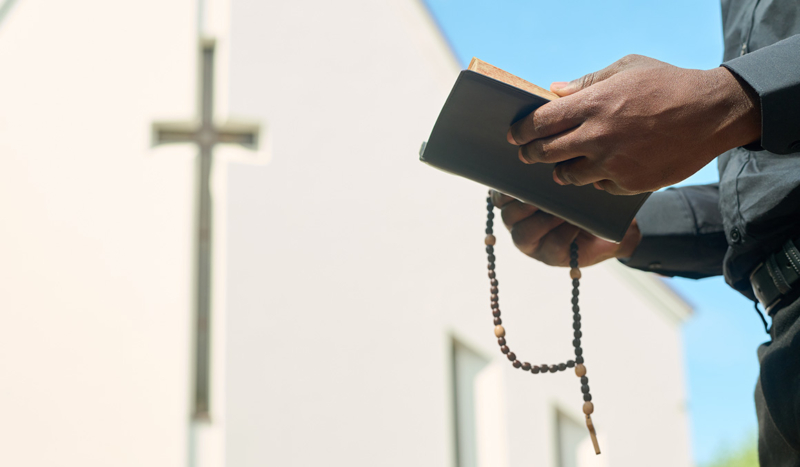
CV NEWS FEED// The Archdiocese of St. Louis released a 95-page report, “Slavery in the Historic Archdiocese of St. Louis,” this month on the history of slavery within the Diocese.
The report was released at the third annual “Maafa” procession. “Maafa” is a Swahili word that means great disaster and is used to refer to the horrors of the trans-Atlantic slave trade. The procession took place on June 22, starting with a prayer service at the Basilica of St. Louis, King of France (Old Cathedral) and ending at St. John Apostle and Evangelist Church.
The Diocese has been researching its historical involvement with slavery since 2018, and Bishop Mitchell T. Rozanski authorized the expansion of the project in 2020, naming it “Forgive us Our Trespasses” in 2021.
According to the St. Louis Review, the two goals of the project are “to promote open and honest access to historic records of enslavement within the local Catholic Church; and to promote community engagement and encourage dialog on the legacies of slavery in the local community.”
The report revealed that both bishops and clergy bought, owned, and sold slaves. It includes a letter from Bishop Louis William Valentine DuBourg to Bishop Joseph Rosati where Bishop DuBourg says that he regards an African family “as the property of the bishop.” The report discovered the name of this family: the parents were Harry and Jenny Nesnit, who had nine children. The report revealed the names of 99 slaves. Catholic clergy owned many of them.
Director of the archdiocesan Office of Archives and Records Eric Fair said that the report is “only the beginning” of the research into diocesan involvement with slavery. He then highlighted the importance of reparation, saying that in order to move toward healing and hope, the Diocese must acknowledge “the sin and sorrow first.”
Participants in the Maafa prayer service and procession acknowledged that the report was a step towards healing. The emcee of each of the Maafa processions, Danielle Harrison, said, “Not everyone will understand why this is so important to have a report that talks about this part of our history, but as we continue to confess the sin of slavery and our complicity in it, that’s where true healing begins.”
Another participant, Pam White, mentioned the importance of naming the slaves owned by Catholic clergy. “It shows that the Catholic Church has acknowledged the wrongs that were done and they are not just paying a lip service. They’re trying to right things, and the process is still going on.”

